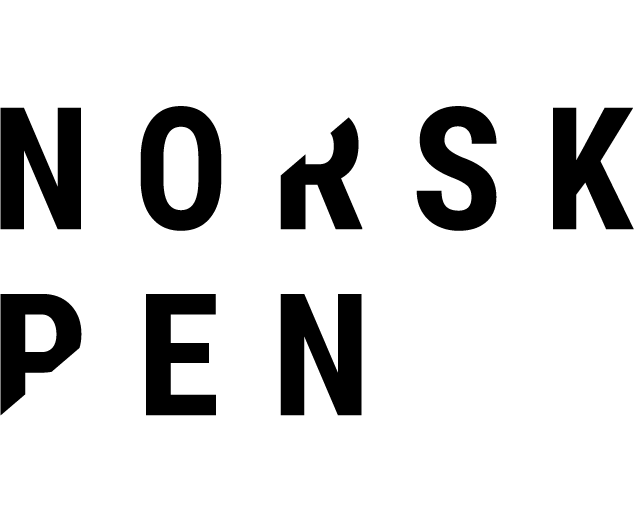2015 Mexico: José Moisés Sánchez Cerezo & Mario Alberto Crespo Ayón
Ambassador
Luis Javier Campuzano Piña
Mexico Embassy to Norway
E-mail: embnoruega@sre.gob.mx
Oslo, 13th January 2015
Fate of missing journalists must be clarified
The recent disappearance of two journalists in Mexico highlights ongoing concerns about the safety of journalists in the country, PEN International notifies. Newspaper editor José Moisés Sánchez Cerezo was reported missing in Veracruz state in early January 2015, while Mario Alberto Crespo Ayón, a TV reporter and former print journalist from Sinaloa state, has not been seen since early December 2014. Norwegian PEN is calling on the Mexican authorities to investigate these disappearances, clarify the fate of the two journalists and to bring any perpetrators to justice.
In order to ensure that any possible links to their work are prioritised, the investigations should be led by the Special Prosecutor for Crimes Against Freedom of Expression (Fiscal Especial para la Atención de Delitos cometidos en contra de la Libertad de Expresión – FEADLE).
At least 11 other print journalists have gone missing in the last decade – a quarter of them from Veracruz state. They are among thousands of similarly disappeared people in the country. In most cases, the authorities have failed to clarify their fate, thereby violating their obligations under international law. The federal government of Enrique Peña Nieto, which came to power in December 2012, has implemented some measures to recognise the scale of the problem, to improve attempts to clarify the fate of victims and investigate those responsible. However, the scale of involvement of state agents in enforced disappearance in the country has still to be acknowledged.
Working as a journalist in Mexico is fraught with danger as the country faces spiralling levels of violence, much of it stemming from drug cartels and the government’s armed offensive against them. At least 61 journalists have been murdered in the last 10 years; Veracruz is again among the worst offenders for journalist killings, along with Tamaulipas, Guerreo and Chihuahua. Very few – if any – of these murders have been satisfactorily resolved.
Background
On 2 January 2015, José Moisés Sánchez Cerezo was abducted from his home in Medellín de Bravo, Veracruz state, by a group of heavily armed men. His abductors also seized his computer, camera and mobile telephone before bundling him into one of three vehicles. He has not been seen or heard from since.
Sánchez, aged 49, is the owner and editor of La Unión, a free weekly print and digital newspaper circulated in communities surrounding Medellín de Bravo, Veracruz; he reportedly also works as a taxi driver. Active in his local community and involved in the local neighbourhood watch group, he has often been critical of the local authorities’ track record in tackling crime both in his articles and on Facebook, according to reports.
Recently, Sánchez had reported on – and participated in – recent protests against alleged abuses carried out by the mayor of Medellín de Bravo. Three days before his abduction, on 30 December, Sánchez was warned to stop his reporting by an unidentified man who approached his home, according to his son. His family are reported to believe that Sánchez was been targeted for these articles and have linked the mayor to the incident. However, the mayor denied any involvement in a public statement made on 5 January and confirmed that he would cooperate with the investigation into the disappearances, according to news reports. A month earlier, Mario Alberto Crespo Ayón, a former print journalist currently working for Uno TV, disappeared after leaving his home in Matazlán, Sinaloa state, on 3 December 2014. Shortly before, Crespo spoke with family members on the telephone and arranged to meet his girlfriend later that day. Family members have attempted to call his mobile telephone; however it appears to be switched off. His family reported his disappearance to the attorney general’s office. Crespo has previously worked for the newspapers Noroeste, Primera Hora and Línea Directa.
Mexico is a state party to the International Convention for the Protection of All Persons from Enforced Disappearance. Enforced disappearance is defined as ‘the arrest, detention, abduction or any other form of deprivation of liberty by agents of the State or by persons or groups of persons acting with the authorization, support or acquiescence of the State, followed by a refusal to acknowledge the deprivation of liberty or by concealment of the fate or whereabouts of the disappeared person’. Disappearance is a term used when there is evidence that the victim was abducted and their whereabouts remain unknown, but there is no evidence that state agents were involved either directly or indirectly.
Under the Convention, states have an obligation to accept reports of enforced disappearances and undertake prompt, thorough and impartial investigations. In addition, states must also investigate all disappearances carried out by people acting without the authorization, support or acquiescence of the state. In other words, in cases of disappearances and enforced disappearances, the state has an obligation to establish the whereabouts of the victim; bring to justice the perpetrators; and ensure victims or their relatives receive reparations.
In December 2011, the UN Working Group on Enforced or Involuntary Disappearances said, in a report on a mission to Mexico: ‘The chronic pattern of impunity still exists in cases of enforced disappearance and sufficient efforts are not being made to determine the fate or whereabouts of persons who have disappeared, to punish those responsible and to guarantee the right to the truth and reparation.’
Yours sincerely,
Ms Brit Bildøen
Chair of Writers in Prison Committee
Norwegian PEN
COPY: The Norwegian Ministry of Foreign Affairs

